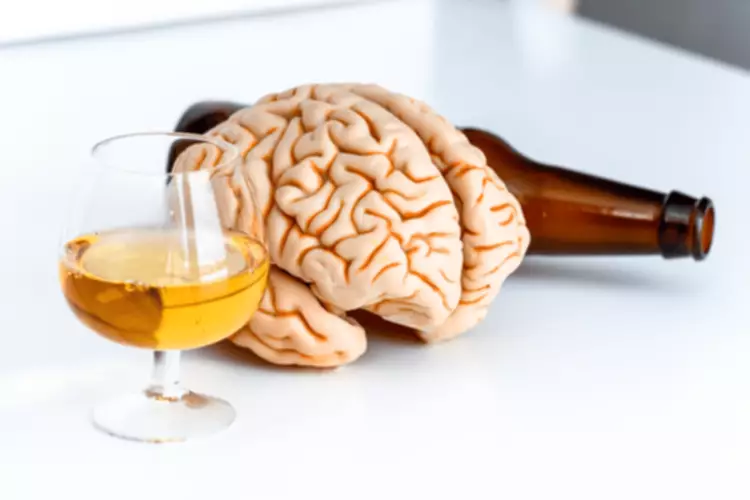
Alcohol withdrawal syndrome occurs when someone with alcohol use disorder stops or suddenly decreases their alcohol intake. Alcohol withdrawal syndrome refers to a group of symptoms that can develop when someone with alcohol use disorder suddenly stops drinking. Once you have gone through withdrawal, you’ll also need a plan to remain alcohol-free. Start by talking to a healthcare provider about the treatment options for alcohol dependence. Alcohol withdrawal symptoms can be greatly reduced or even eliminated with proper medical care.
Can I just quit drinking on my own?

This creates a state of temporary confusion and leads to dangerous changes in the way your brain regulates your circulation and breathing. The body’s vital signs such as your heart rate or blood pressure can change dramatically or unpredictably, creating a risk of heart attack, stroke or death. To help relieve uncomfortable withdrawal symptoms, many treatment programs offer medication-assisted therapy. Certain prescribed medications can treat alcohol withdrawal, allowing patients to focus on other aspects of recovery.
When to Contact a Medical Professional
A rare but very serious syndrome called delirium tremens can occur during alcohol withdrawal. Also known as DTs, an estimated 2% of people with alcohol use disorder and less than 1% of the general population experience them. This article discusses alcohol withdrawal, its symptoms, and potential complications.
- Alcohol addiction rehabs offer a safe, secure and comfortable environment during the withdrawal phase.
- For example, some people choose to write a list of reasons why they want to stop drinking alcohol, and revisit the list to remind themselves after a relapse.
- There are many support options available that can help guide you through alcohol withdrawal, as well as abstaining from alcohol after withdrawal.
- From sleeping better to supporting your immune system, there are some significant impacts that your body may experience by embarking on a booze-free journey.
- Certain prescribed medications can treat alcohol withdrawal, allowing patients to focus on other aspects of recovery.
- Alcohol withdrawal symptoms can be greatly reduced or even eliminated with proper medical care.
What are mild alcohol withdrawal symptoms?
PAWS is one of the leading causes of relapse for individuals that have completed alcohol addiction treatment. Many people experience symptoms of PAWS in cyclical waves – one day you feel fine, and the next you’re plagued by low energy and intense cravings for alcohol. The spontaneity of this withdrawal phase can make resisting temptation hard. However, it’s important to note that each PAWS episode is often limited to only a few days at a time.
- This process temporarily restores homeostasis, or chemical balance, in an effort to counteract the impact of long-term alcohol use on the brain.
- A doctor may also prescribe a sedative drug, such as a benzodiazepine, to help reduce withdrawal symptoms such as restlessness or agitation.
- If you do not have insurance, your doctor can help put you in touch with a facility or treatment program that offers financial aid, financing, or a sliding scale payment system, in which you pay what you can.
- However, medical complications can occur during the acute phase of withdrawal.
- Some people experience prolonged withdrawal symptoms, like insomnia and mood changes, that can last for weeks or months.
- Still, people experiencing these withdrawal symptoms are generally fully conscious and can think clearly.
MODERATE SYMPTOMS (CIWA-AR SCORE OF 10 TO 18 OR SAWS SCORE GREATER THAN
Alcohol withdrawal is easy to diagnose if you have typical symptoms that occur after you stop heavy, habitual drinking. https://ecosoberhouse.com/ If you have a past experience of withdrawal symptoms, you are likely to have them return if you start and stop heavy drinking again. There are no specific tests that can be used to diagnose alcohol withdrawal. The most dangerous form of alcohol withdrawal occurs in about 1 out of every 20 people who have withdrawal symptoms. Although alcohol withdrawal can be a dangerous and painful process, it is a necessary step on the road to recovery. When conducted under the supervision of medical professionals, alcohol withdrawal is a much safer and easier process.


This is why when consuming alcohol, people experience initial feelings of happiness, increased sociability, and relaxation. Although Sober living home there are many benzos available, diazepam (Valium), lorazepam (Ativan), and chlordiazepoxide (Librium) are the most frequently used. They’re sedatives that work by stimulating gamma-aminobutyric acid (GABA), a chemical in the brain that is involved in setting off alcohol withdrawal symptoms. Alcohol withdrawal that progresses to delirium tremens causes intense hallucinations, as well as severe confusion, disorientation, and agitation.
Alcohol withdrawal FAQs

While these symptoms are more severe than Stage 1, they are not life-threatening. Following successful completion of detox, an inpatient or outpatient rehabilitation program may be recommended to allow further work toward recovery and relapse prevention. We’ll be able to tell you if your insurance provider is in network with an American Addiction Centers treatment facility.
- Blood tests and imaging tests can show if organs, such as the liver, have been affected by a person’s intake of alcohol.
- Keep a list of emergency phone numbers on hand that includes contact info for your doctor, the police, a nearby hospital, and someone you trust.
Supporting Long-Term Abstinence
This syndrome can further progress to severe alcohol withdrawal manifestations, such as alcohol withdrawal delirium, which poses significant diagnostic and management challenges. Mild symptoms may progress to alcohol hallucinosis, characterized by visual or auditory hallucinations that usually subside within 48 hours after alcohol cessation. Withdrawal seizures can occur in patients within just a few hours of alcohol cessation. Alcohol withdrawal symptoms can shift quickly and violently – you can experience minor symptoms to extremely severe side effects in a matter of hours.
